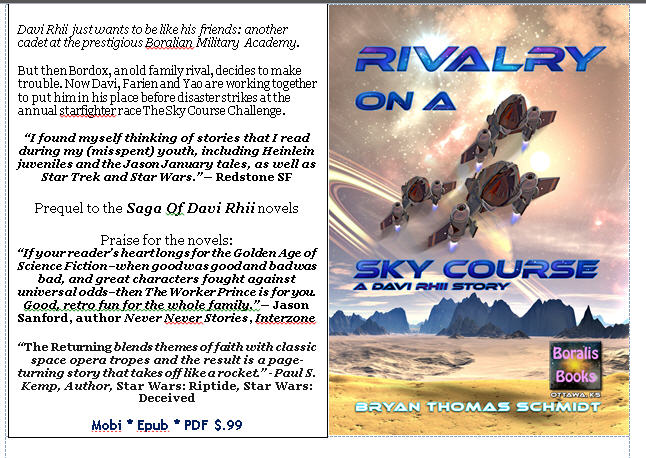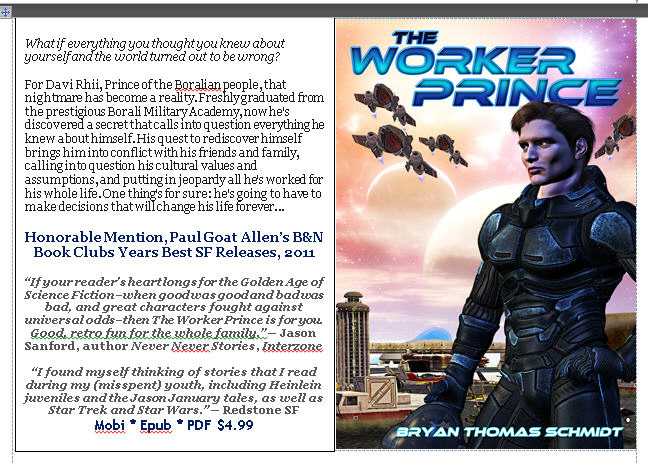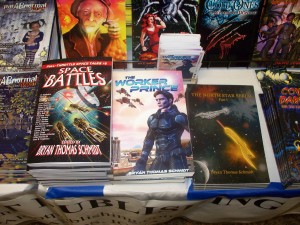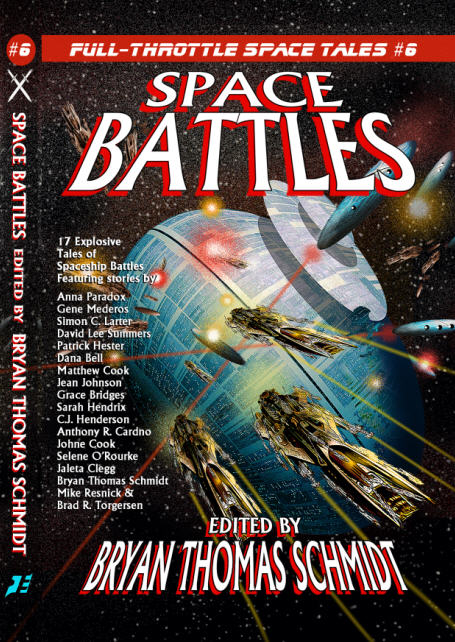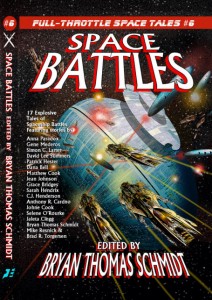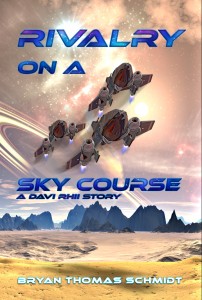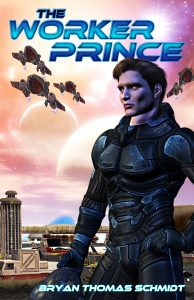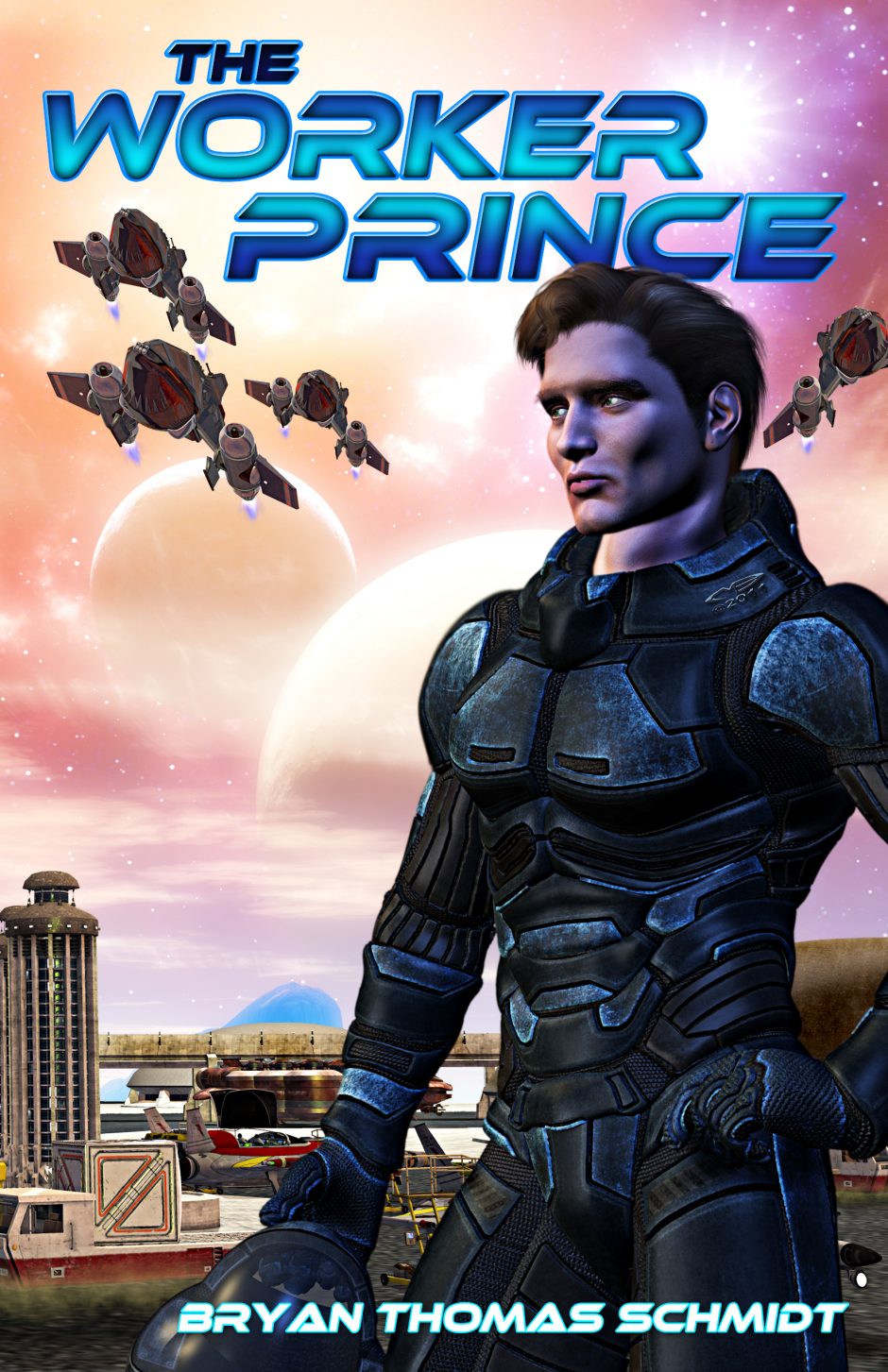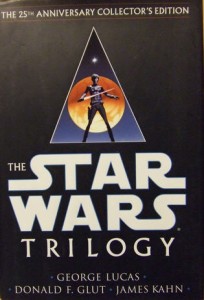 In Spring 2010, I got the chance to pitch publisher David Rozansky of Flying Pen Press some anthology ideas I’d been developing and wound up hired to edit the next installment in the publisher’s long running Full Throttle Space Tales anthology series, Space Battles, which release last week, April 18. After three years now of significant work editing books, stories and now an anthology with authors, I can tell you I have come to the conclusion every writer ought to get experience being an editor. There’s so much helpful stuff to learn but this was particularly true from editing an anthology. Here’s 7 things I learned:
In Spring 2010, I got the chance to pitch publisher David Rozansky of Flying Pen Press some anthology ideas I’d been developing and wound up hired to edit the next installment in the publisher’s long running Full Throttle Space Tales anthology series, Space Battles, which release last week, April 18. After three years now of significant work editing books, stories and now an anthology with authors, I can tell you I have come to the conclusion every writer ought to get experience being an editor. There’s so much helpful stuff to learn but this was particularly true from editing an anthology. Here’s 7 things I learned:
1 ) Meet Deadlines — As an editor, there’s nothing worse than sitting around waiting on writers. If you set a deadline, particularly as I did, many months out for your project, and hardly any stories come in by deadline, you start to worry. I had invited 37 people and needed 17-19 stories, and I had 6 come in by deadline. Unsurprisingly, two of those were by my headliners Mike Resnick & Brad R. Torgersen and Jean Johnson. There’s a reason Mike Resnick gets so many awards and has such a body of work: he’s a pleasure to work with. He’s a professional. He’s reliable. You never appreciate that more than when you’re editing something like this.
2 ) Be Courteous — I invited you to submit to my anthology, in many cases because you’re friends or I like your work. Some of you expressed an interest beforehand and I honored that. Okay, then how come I can name at least 10 “friends” I’ve never heard from since? They didn’t thank me for the original invite. They didn’t respond to the reminders as deadline approach. Not a word after the post-deadline pleas for more stories. I have heard nothing. How do you think that makes me feel about their professionalism and their friendship? How likely do you think I’ll be to invite them to my next project? I leave it to you to figure that out but I’d bet it’s pretty obvious after what I said about Resnick. Resnick’s already invited to my next project.
3 ) Work With Me — Editors edit. It’s what we’re employed to do. My job is to help both your story and the anthology as a whole be the best it can be. I want us all to win. I don’t want to ruin your story, so don’t be difficult. Yeah, I’m not perfect. I don’t know everything. But neither do you. When I ask for changes, I expect you to discuss it yes, but I also expect you to make the changes. If there’s something you feel strongly about, I am fair. We can discuss it. But don’t make me do it for you from stubbornness and don’t nitpick every single minor change. I had some authors who asked to keep a couple things for various reasons and I agreed because they willingly made every other change I asked for. I didn’t ask for a lot. I hate asking people to change their precious words. But sometimes it’s necessary for good reasons. One of my authors wrote enough backstory to fill several novels and his story dragged and suffered for it. He refused to make changes, even after I went through and marked stuff out for him. Most editors would have just rejected it, but I went the extra mile. I wanted to help him make it work. Then this same author kept bragging about how this was “the most brilliant story” I’d gotten of all of them. I passed. And I won’t be inviting him to future projects. I asked for a couple tweaks in Resnick & Torgersen’s story and had it back in less than 24 hours. Who would you rather work with?
4 ) Editors Want Your Story To Be Good — Not only is hard to ask writers to change their precious words, but it’s really hard to reject their stories. It broke my heart. The first story Jean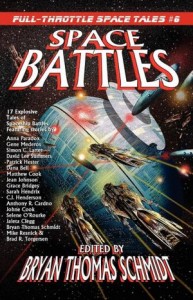 Johnson subbed, I rejected. It didn’t have a core ship on ship battle in space. I did the same with trunk stories from Jay Lake, Kevin J. Anderson and Chuck Gannon. The stories were all brilliant. I’m sure they will find homes. They just didn’t fit the guidelines for this. Yes, I couldn’t believe I was rejecting stories from such talented people. But then I also rejected a couple off sub-par stories as well. And one of them was by a good friend. That was really hard. It hurt me to say it. I didn’t want to be another rejection for any writer. We get enough. I wanted their stories to be good. I wanted them all to be ready and right for the anthology. They weren’t. Thank God I chose not to do an open call. Imagine how many more painful rejections I’d have had to make? As it was, at least I could personalize and praise the good along with saying “no.” And although I know I did the right thing by saying “no,” I still wish I could have said “Yes!”
Johnson subbed, I rejected. It didn’t have a core ship on ship battle in space. I did the same with trunk stories from Jay Lake, Kevin J. Anderson and Chuck Gannon. The stories were all brilliant. I’m sure they will find homes. They just didn’t fit the guidelines for this. Yes, I couldn’t believe I was rejecting stories from such talented people. But then I also rejected a couple off sub-par stories as well. And one of them was by a good friend. That was really hard. It hurt me to say it. I didn’t want to be another rejection for any writer. We get enough. I wanted their stories to be good. I wanted them all to be ready and right for the anthology. They weren’t. Thank God I chose not to do an open call. Imagine how many more painful rejections I’d have had to make? As it was, at least I could personalize and praise the good along with saying “no.” And although I know I did the right thing by saying “no,” I still wish I could have said “Yes!”
5 ) Editors Have Deadlines Too — Yeah, I set a deadline for story subs, but you know what, your missing that deadline creates issues with my deadlines for having stories picked and submitting a manuscript to the publisher. I actually had to push it back waiting for stories. How does that make me look professionally? Oh, the publisher was gracious. He understood. But if you continually put me in a spot where I can’t meet deadlines, how likely am I to want to work with you in the future?
6 ) Editors Work Hard — I don’t think you realize how much work it takes to edit until you do it. I’m not talking revision passes on your manuscript. I’m talking editing someone else’s precious work so that it comes out shiny and make everyone get the praise they deserve. It needs to not just fit with the stories around it and flow well, but you need to polish it for typos, get their name right, format it, polish it. It takes a lot of passes reading the stories and it takes a lot of time nitpicking little details. Sadly, I just the other day found a typo in one story near the end of the anthology which I should have caught. I am going to be kicking myself about that forever. I let those writers down. It’s a lot of pressure and work to not just sell the anthology to the publisher, but figure out the best story order, manage the budget wisely, recruit writers, control deadlines, meet deadlines of your own, etc. It takes work to keep fresh eyes rereading the same stories over and over because of all the details. You want to make sure they’re as good as can be and yet you’ve read them so many times it becomes a bit like editing your own work. So writers, don’t think editors have the easy job, because they don’t. And they’re reputations are dependent not just on picking great stories but lots of other factors too.
7) It Feels Just As Good — The sense of pride and accomplishment you get from seeing an anthology you edited published is not that different from that you feel when your novel comes out. It feels really good to help fellow writers achieving career goals even as you achieve your own. It feels really good to know someone finally made it into print with you. It feels good to see them published alongside respected colleagues like Mike Resnick, Jean Johnson, or David Lee Summers. It’s not entirely your own work, gestated for years, pounded through many drafts, yes, because it’s a community effort, but that doesn’t make the success of that any less different. Especially when, having finished, you feel like the writers have become better friends and people you’d welcome working with in the future and who would welcome the opportunity to work with you. And when the publisher asks you ‘what else have you got?’ Boy, that’s a great moment, too. I never looked down on editing as lesser–less of a craft, less significant than writing– but I also never realized how good it could feel to do it and see the end result published professionally. I’ve been proud of the books I edited which got published and were well received, but this pleased me more because I really played a more significant role in its creative design and overall final form by choosing stories, cover, writing intros, bios and the cover copy. It’s a really good feeling and I doubt anyone who takes it on would disagree.
Well, there’s 7 things I learned from editing Space Battles: Full Throttle Space Tales #6. What lessons have you learned from editing, working with writers, or editing others? I’d welcome comments. For what it’s worth…
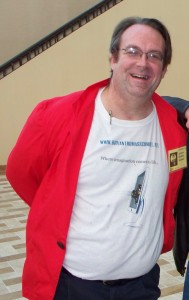 Bryan Thomas Schmidt is the author of the space opera novels The Worker Prince, a Barnes & Noble Book Clubs Year’s Best SF Releases of 2011 Honorable Mention, and The Returning, the collection The North Star Serial, Part 1, the children’s book 102 More Hilarious Dinosaur Jokes For Kids from Delabarre Publishing and editor of the anthology Space Battles: Full Throttle Space Tales #6 which he edited for Flying Pen Press, headlined by Mike Resnick. As a freelance editor, he’s edited a novels and nonfiction. An affiliate SFWA member, he also hosts Science Fiction and Fantasy Writer’s Chat every Wednesday at 9 pm EST on Twitter and is a frequent contributor to Adventures In SF Publishing, Grasping For The Wind and Hugo nominee SFSignal. He can be found online as @BryanThomasS on Twitter or via www.bryanthomasschmidt.net.
Bryan Thomas Schmidt is the author of the space opera novels The Worker Prince, a Barnes & Noble Book Clubs Year’s Best SF Releases of 2011 Honorable Mention, and The Returning, the collection The North Star Serial, Part 1, the children’s book 102 More Hilarious Dinosaur Jokes For Kids from Delabarre Publishing and editor of the anthology Space Battles: Full Throttle Space Tales #6 which he edited for Flying Pen Press, headlined by Mike Resnick. As a freelance editor, he’s edited a novels and nonfiction. An affiliate SFWA member, he also hosts Science Fiction and Fantasy Writer’s Chat every Wednesday at 9 pm EST on Twitter and is a frequent contributor to Adventures In SF Publishing, Grasping For The Wind and Hugo nominee SFSignal. He can be found online as @BryanThomasS on Twitter or via www.bryanthomasschmidt.net.


